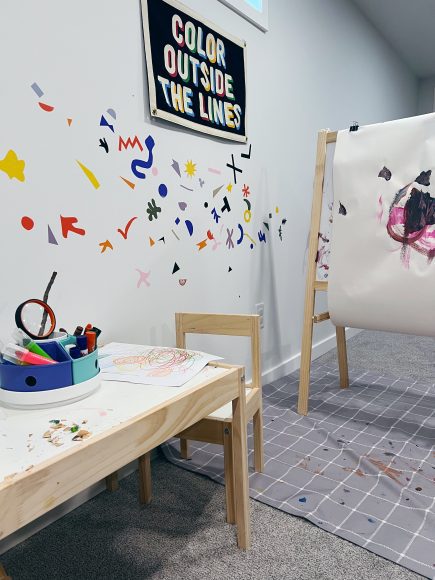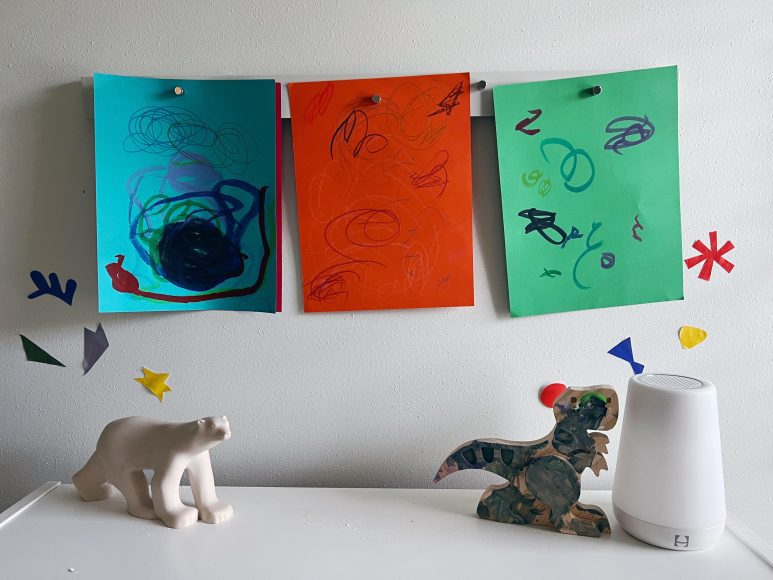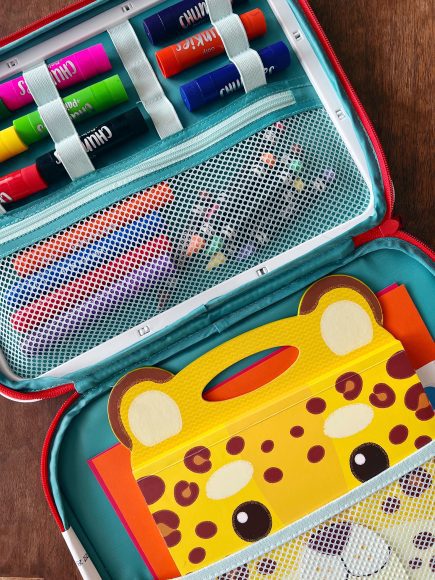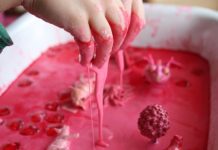Make room for art!
With school back in session and the hustle of the fall season upon us, I often look to making as a way to ground my day when things feel hectic. Making and creating can have the same effect on our children. As an art educator, I don’t expect that every child I work with will become a professional artist. But, I do hope that they find that the process of making contributes to their lives through problem-solving, creative thinking, and even as a tool to be present and mindful. Here are some ways that I encourage a daily practice of making with young artists.

1. Create a Maker Space
Have a designated area, either stationary or mobile, for your child to use to create. Depending on the age of your child, making in the home might elicit some anxiety (what if they make a big mess?!). By having a designated maker space, everyone will feel more comfortable knowing that it is okay to make a mess and therefore get creative in this space. To make yourself more comfortable, utilize mats, drop cloths, or wipeable table cloths to pick up the spills or marks, limit the kinds of materials you provide (only washable markers, paints, etc.!), or cover the wall near the area with large paper if you have an artist who likes to migrate their creations to blank walls. Don’t have room in your home for this type of setup? Keep your materials on a rolling cart or divided bin to bring to an area where you do feel comfortable making a mess, like the kitchen table or outside.

2. Display Your Artist’s Creations
Once your artist has a collection of work, put those masterpieces on display! By displaying your child’s art, you are validating their work and creativity. I love a good refrigerator moment as it is a place in the home that everyone sees regularly. Consider a more permanent place for art displays as well. I like to display art in the area where young artists are making to further encourage their creativity— seeing what you’ve already done is always motivation to keep going! Cork boards or magnetic strips are wonderful tools for displaying art that allow you to swap items out regularly.
3. Carry a Sketchbook
Just as we might have a book on us at times (or probably more accurately, our phones!) to entertain us during those moments of idle waiting, a sketchbook can provide the same outlet. I always encourage my young artists to have their own sketchbooks. It doesn’t need to be anything fancy, just a notebook that’s all their own with unlined pages. Encourage doodling, observational drawing, imaginative sketching— anything and everything! Pull it out at doctor’s offices, restaurants, or anytime inspiration strikes your young artist.

4. Create an On-the-Go Art Kit
In the same spirit as a sketchbook, having a mobile art kit that can travel with you either around your home or on trips can aid in making art a regular part of your child’s life. I created one for my three-year-old, and it’s been an easy way to implement art into our daily life. The Mala Portable Drawing Case from IKEA is an affordable kit that I’ve been able to stock with my son’s favorite art supplies. It even has a drawing surface on one side, making it perfect for the car! Here’s what I’ve included in our art kit:
- Construction paper crayons
- Paint sticks
- Chunky markers
- Thick-handled pencils
- Colored cardstock
- A sketchbook
- Labeling stickers
5. Make Art Together
As a parent, I’m sure you’ve experienced your child mimic something you’ve said or done, whether positive or negative! The same is true for modeling behavior like making. The next time your child is sitting down to create, join them! Even if it’s something you’re not comfortable doing, show your child that creativity requires courage and experimentation. If they see you taking the risk, they are more likely to themselves. It can also be a relaxing and screen-free way to spend time together. You never know, you might find a new hobby for yourself in the process.










